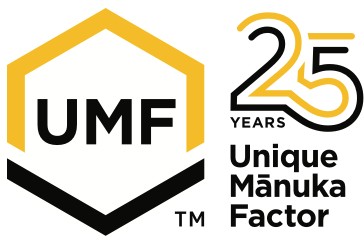The 1,2-dicarbonyl compounds 3-deoxyglucosulose (3-DG), glyoxal (GO), and methylglyoxal (MGO) were measured as the corresponding quinoxalines after derivatization with orthophenylendiamine using RP-HPLC and UV-detection in commercially available honey samples. Whereas for most of the samples values for 3-DG, MGO, and GO were comparable to previously published data, for six samples of New Zealand mānuka (Leptospermum scoparium) honey very high amounts of MGO were found, ranging from 38 to 761 mg/kg, which is up to 100-fold higher compared to conventional honeys. MGO was unambigously identified as the corresponding quinoxaline via photodiodearry detection as well as by means of mass spectroscopy. Antibacterial activity of honey and solutions of 1,2-dicarbonyl towards Escherichia coli (E. coli) and Staphylococcus aureus (S. aureus) were analyzed using an agar well diffusion assay. Minimum concentrations needed for inhibition of bacterial growth (minimum inhibitory concentration, MIC) of MGO were 1.1 mM for both types of bacteria. MIC for GO was 6.9 mM (E. coli) or 4.3 mM (S. aureus), respectively. 3-DG showed no inhibition in concentrations up to 60 mM. Whereas most of the honey samples investigated showed no inhibition in dilutions of 80% (v/v with water) or below, the samples of mānuka honey exhibited antibacterial activity when diluted to 15-30%, which corresponded to MGO concentrations of 1.1-1.8 mM. This clearly demonstrates that the pronounced antibacterial activity of New Zealand Manuka honey directly originates from MGO.
Mavric, E., Wittman, S., Barth, G., Henle, T. (2008)
Follow link to purchase PDF: https://pubmed.ncbi.nlm.nih.gov/18210383/.


